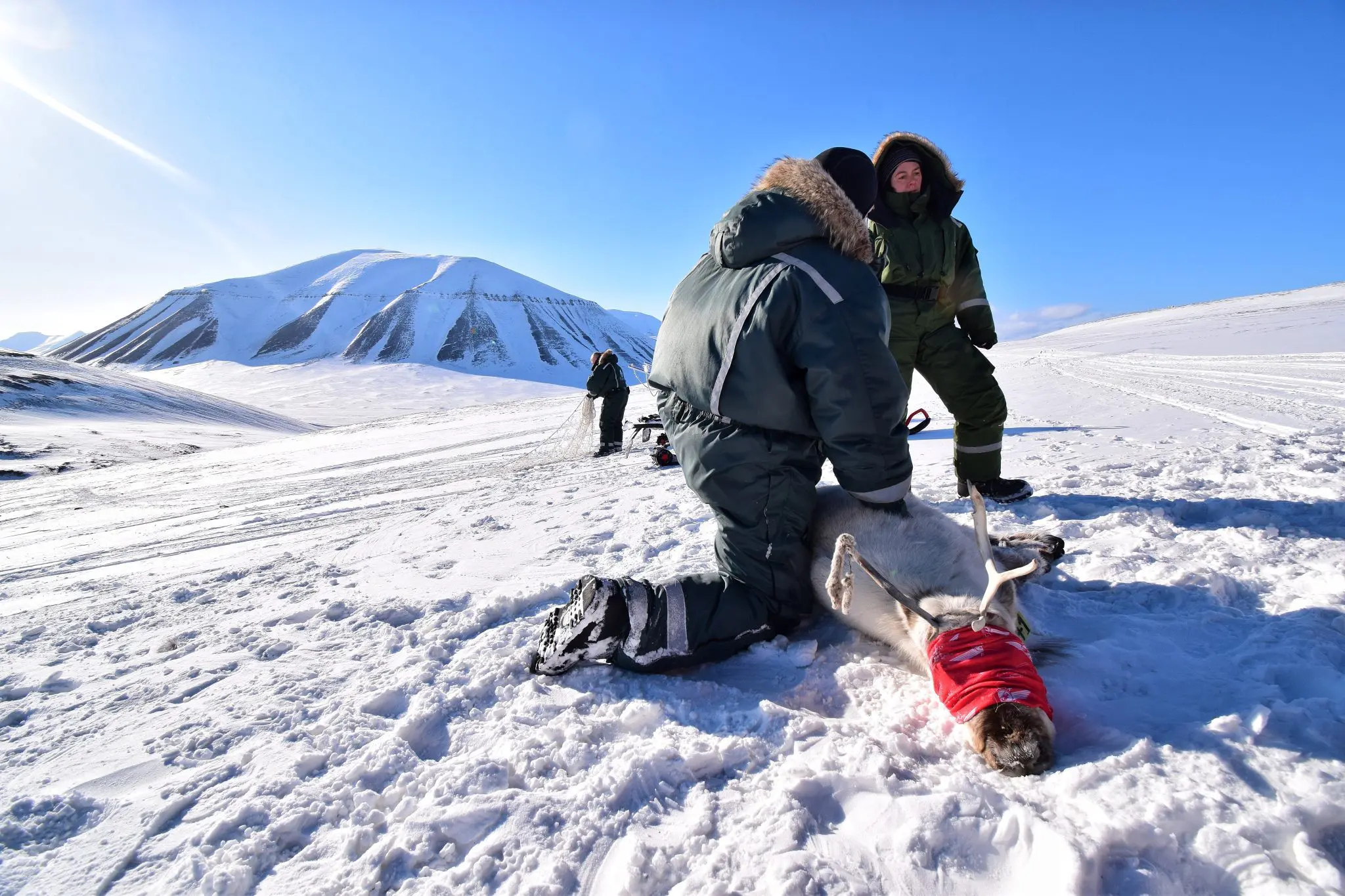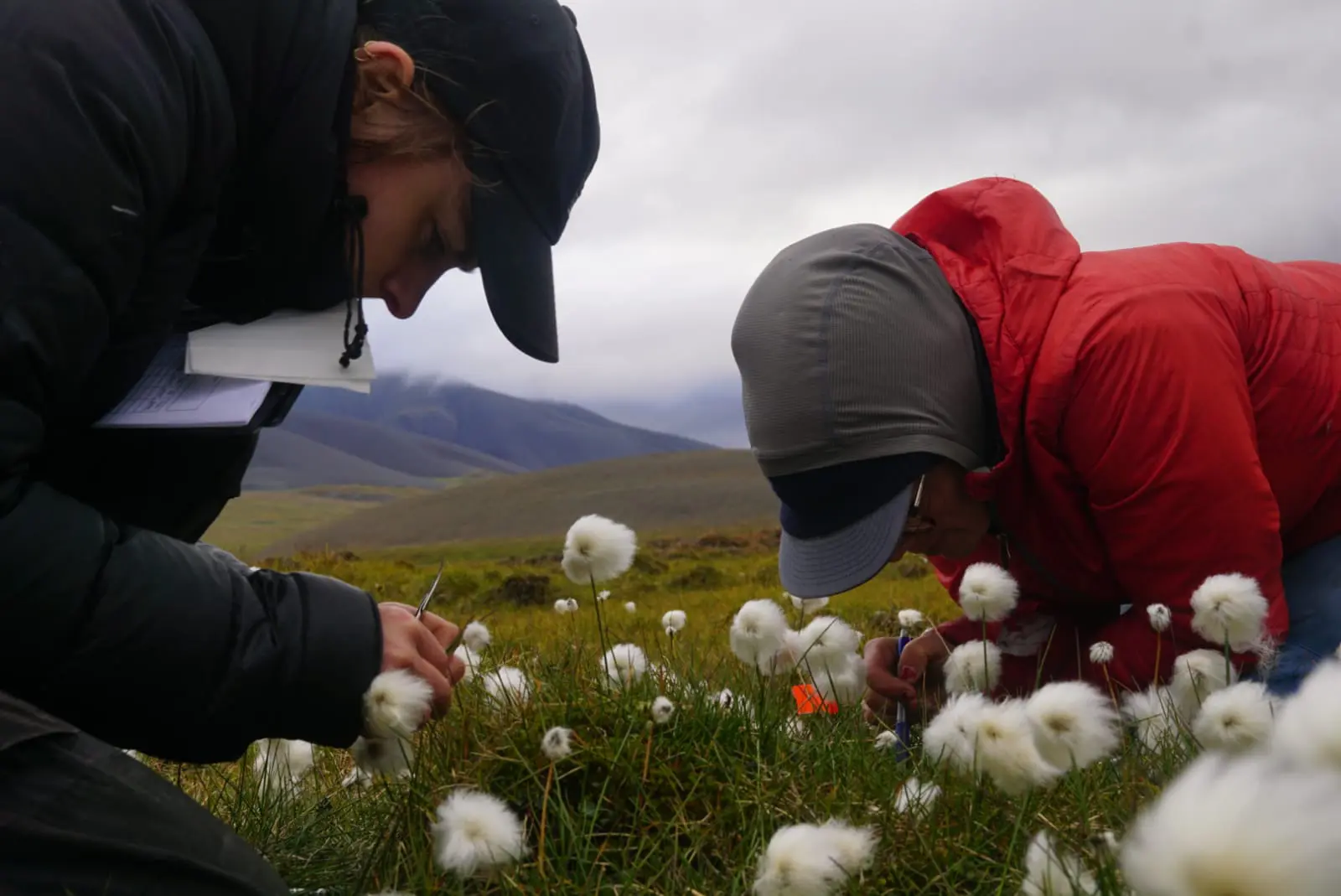Larissa Beumer and Samantha P. Dwinnell secured funds for their projects
Tuesday was a good day for the Arctic Biology department at Unis when Larissa Beumer and Samantha P Dwinnell received grants from Svalbard's Environmental Protection Fund.

“We are best known for our marine and plant research, but the money for the reindeer project shows that UNIS also studies terrestrial wildlife. And it is huge to be recognized”, elaborates Dwinnell.
It was Svalbardposten that published the news earlier this week, where two UNIS biologists were granted money for the projects “BIG deal: Communicating science in the field” (UNIS) and “Svalbard reindeer’s unique diet – why do they eat flowers and roots?” (NMBU).”
The former is linked to a long-term ecological monitoring project in Bjørndalen called “Bjørndalen Integrated Gradients (BIG),” established by the AB department in 2019.
BIG aims to monitor ecological processes from the open sea through the coastal zone and onto land in one joint location and to provide an arena for field-based biology education where students can participate in and contribute to research projects.
“It is great to see that the Svalbard Environmental Protection Fund recognizes the importance of this monitoring work and supports our efforts to communicate its significance and findings to the public, “says Beumer.
Research communication aimed at the local community.
You may have seen different installations in Bjørndalen and Endalen and wondered about their purpose. For example, time-lapse cameras monitor the Svalbard flora and insects minute by minute to provide insight into how the flowers and pollination activity develop throughout the season. Small tents are used to collect samples of invertebrates at a precise location. In addition, the researchers also monitor Svalbard reindeer habitat use every week.
With fresh money into the project, the plan is to strengthen communication with the local community, and there are two components to this.
The first is to provide information by establishing signs in the field sites, similar to the ones that the LoFF (BirdLife Svalbard) has in the lagoon in Vestpynten. With a QR code leading to updated information and images, it will be interactive and accessible.
The second component is to reach out to a wide range of possible local collaboration partners to create opportunities for active outreach and science communication. People in Longyearbyen are active and curious, and our study sites in Endalen and Bjørndalen are primary areas for recreation. We want to create tour offers for school kids, locals, and tour guides to show them our research sites and explain what we do there”, says Beumer. “By educating tour guides, we hope to inform the visitors as well indirectly.”

Food habits of reindeer.
For Samantha Dwinnell, findings from last year’s fieldwork gave rise to the idea for an application.
Dwinnell and her two master’s students observed the GPS-tagged reindeer to learn about their eating habits. They discovered that the reindeer did not just graze indiscriminately on the tundra but had specific preferences that varied with seasonal changes. In spring and early summer, the reindeer seemed to prefer the flower heads, while they started digging for roots when the flowering period was over.
“They grazed so thoroughly that there were no flowers left for us to take samples from”, she says while laughing. “Thus, we have yet to look for what nutrients they might need.”
“They are smart about it”, explains Dwinnell. “When we have rain-on-snow events, the reindeer move to other valleys with better conditions. And they target areas where – as far as we can tell – they haven’t been before, but somehow, they know where to go.”
This feeding behavior needs to be better documented, and it is essential to know more about it since all parts of the ecosystem are connected. This grant enables her to hire assistants for the fieldwork. Conducting fieldwork is intensive and labor-consuming, and the funds will ensure the help she needs to keep the project going.
Dwinnell highlights her supervisor from NMBU (Norwegian University of Life Sciences), Leif Egil Loe, who wrote the application with her for a grant through the Environmental Protection Fund.


People are curious about our work.
Beumer – also a reindeer researcher – looks forward to showing people what they are working on in Arctic Biology. She emphasizes the duty and responsibility of researchers to communicate new findings.
– It is very challenging to get money for funding long-term monitoring time series, but in many ways, they are the most important, explains Beumer. The Arctic is a hotspot for climate change, but we also experience a lot of natural variation between years. To conclude the impacts of climate change, we need data that enables us to study long-term patterns.
– “Only by monitoring changes over long periods can one say something about climate change and its implications for the various species and food web interactions. And this is precisely why we established the BIG project in Bjørndalen.”
Grants from Svalbard’s Environmental Protection Fund allow sharing of valuable information with stakeholders and society and getting the research out there.